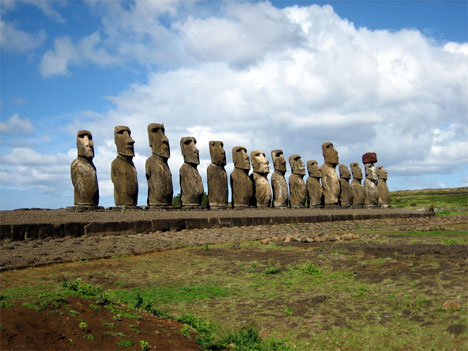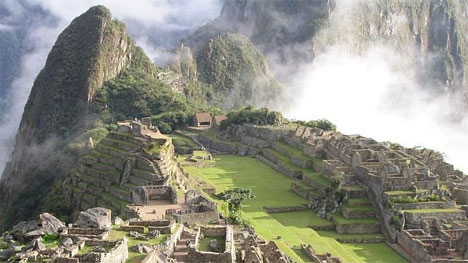Easter Island
(images via: Wikipedia)
Easter Island, also known as Rapa Nui or Isla de Pascua, is a Polynesian island in the southeastern Pacific Ocean, most famous for its monumental statues which were created by the Rapanui people. The statues, called moai, were part of the ancestral worship of the island’s settlers and were carved between 1250 and 1500 CE. The heaviest moai erected weighs 86 tons, illustrating how great a feat it was for the Rapanui to have created and moved them. Nearly half of all remaining moai are still at Rano Raraku, the main moai quarry, but hundreds were moved to stone platforms around the island’s perimeter.
Stonehenge
(image via: witcombe.sbc.edu)
Perhaps the world’s best known monument is Stonehenge, located in the English county of Wiltshire. It’s composed of earthworks surrounding a circular setting of large standing stones and is believed to have been built around 2500 BC but has been revised and remodeled over a period of more than 1400 years. Though theories and speculation abound, no one knows what the original purpose of the prehistoric monument was and it remains one of the earth’s greatest mysteries.
Machu Picchu
(images via: Rediscover Machu Picchu)
Machu Picchu is the most well-preserved city of the Inca empire, hidden in the Peruvian Andes high on a steep mountain with a flattened top, a location that helped it escape notice by Spanish conquistadors. It was forgotten for centuries by the outside world, and re-discovered by archeologist Hiram Bingham in 1911. The stones of this city fit together so tightly a knife blade can’t fit between them. Modern research suggests that Machu Picchu was built around 1450 CE as a retreat by and for the Inca ruler Pachacuti and that it was actually relatively small by Inca standards.


